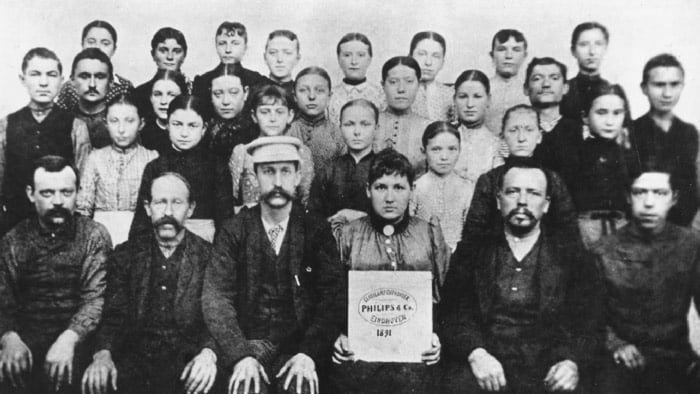Philips Company History
When reflecting on the evolution of technology and innovation, Philips stands as a prime example of progress and adaptability. Established over a century ago, Philips has played a major role in the electronics industry while profoundly shaping how we live and interact with technology.
The journey into Philips’ history starts with its modest beginnings. In 1891, Gerard Philips and his father, Frederik Philips, founded the company in Eindhoven, Netherlands. Initially focusing on producing carbon-filament lamps, this venture laid the foundation for what would grow into a global conglomerate. The early days were not without challenges, with financial struggles and stiff competition. However, their dedication to improving efficiency and product reliability helped Philips overcome these obstacles.
By the early 20th century, Philips emerged as one of Europe’s largest light bulb producers. Their success stemmed not just from mass production but also from their focus on innovation. In 1914, Philips established the Philips Research Laboratory, known as NatLab. This strategic move fostered a culture of research and development, which would be instrumental in driving the company’s growth for decades to come.
During the 1920s and 1930s, Philips expanded into the radio industry, recognizing the immense potential of radio broadcasting. In 1927, they began producing radios, which quickly gained a reputation for quality and affordability. By 1932, Philips had sold over one million radios, demonstrating their keen understanding of consumer needs and market trends.
World War II presented significant challenges for Philips, with the company’s operations being severely disrupted. Despite these hardships, Philips displayed remarkable resilience. They managed to relocate key research personnel, allowing them to continue their work in secret. During the war, Philips made critical contributions to radar technology and other wartime innovations, showcasing their ingenuity even in difficult times.
After the war, Philips embarked on a journey of rebuilding and expanding into new markets. In the 1950s, they played a pivotal role in the development of the cassette tape. The compact audio cassette, introduced in 1963, revolutionized the way people listened to music and recorded audio. This small, portable format became a global standard, shaping the music industry for decades.

The company’s collaborative spirit was evident when Philips partnered with Sony in the late 1970s to develop the compact disc (CD). This breakthrough not only transformed the music industry with digital audio but also demonstrated Philips’ commitment to pushing technological boundaries. The success of the CD set the stage for future digital media formats, highlighting the significance of international collaboration in advancing technology.
In the latter half of the 20th century, Philips continued to innovate and diversify. They made significant contributions to consumer electronics, including the development of the VHS format and, later, their role in the creation of the DVD. In television technology, Philips introduced Ambilight TVs in the 1990s, enhancing the viewing experience with ambient lighting that matched the on-screen content.
Philips’ ventures into healthcare have also been noteworthy. As early as the 1980s, the company recognized the importance of medical technology and began investing heavily in healthcare solutions. Over the years, they expanded their portfolio to include medical imaging, patient monitoring, and health informatics. Today, Philips is a global leader in health technology, with a focus on improving patient outcomes and healthcare efficiency.

One of the most remarkable aspects of Philips’ history is their ability to adapt to changing market dynamics and technological landscapes. In recent years, Philips has shifted its focus from traditional consumer electronics to healthcare technology and lighting solutions. In 2016, Philips Lighting became a separate entity, later rebranded as Signify, allowing Royal Philips to concentrate on health technology in line with global trends toward health and wellness.
Reflecting on Philips’ journey, their continuous innovation and adaptability are truly inspiring. From producing light bulbs in a small Eindhoven factory to becoming a global leader in health technology, Philips exemplifies how a company can evolve over time while staying true to its core mission of improving lives through meaningful innovation.
In examining Philips’ history, their commitment to sustainability and corporate responsibility stands out. The company has set ambitious goals to reduce its environmental impact, aiming to achieve carbon neutrality and embrace circular economy principles. This focus on sustainability aligns with growing global trends toward eco-friendly practices and corporate citizenship.
Philips has also embraced digital transformation by integrating artificial intelligence and data analytics into their products and services. Their emphasis on connected care solutions underscores their vision for the future of healthcare, where technology plays a central role in improving patient care and well-being.
In conclusion, Philips' history is a remarkable story of innovation, resilience, and transformation. Their contributions to various industries have left a lasting impact on the world. As the technological landscape continues to evolve, Philips remains poised to shape the future with their pioneering spirit and dedication to improving lives. Their journey is not just a testament to business success but also to the broader impact that sustained innovation and a commitment to societal well-being can have on the world.
